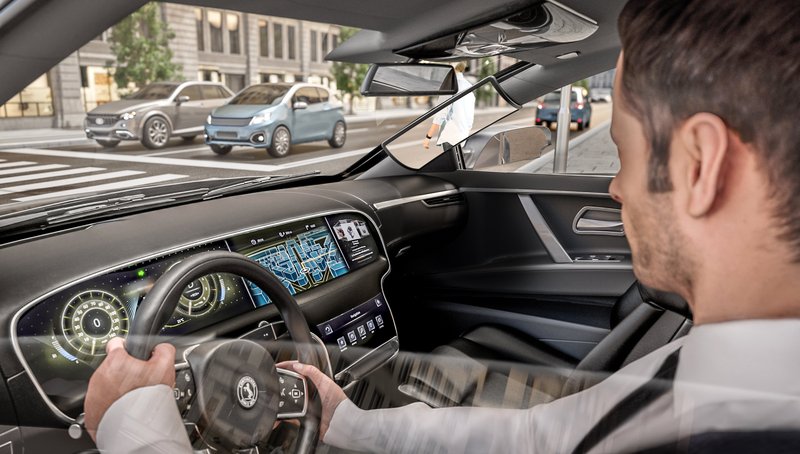Continental Enhances Driver Safety by Eliminating Forward Blind Spots
- Continental pairs its interior camera and integrated OLED displays in the vehicle’s A-pillar for increased visibility and safety
- The Continental Virtual A-Pillar tracks the driver’s movements and displays an image of the vehicle’s exterior environment on the interior OLED displays, enabling the driver to “see through” the A-pillar
- The advanced technology addresses an increasing issue on newer vehicles that may require expanded front pillars
Auburn Hills, Mich., October 18, 2018 – The technology company Continental has developed a Virtual A-Pillar to help remove forward blind spots – making wide A-pillars virtually see-through. The front support pillars, often referred to as A-pillars, anchor the windshield and the beginning foundation of the vehicle’s roof. However, A-pillars have also been identified as visual obstructions for the driver. Over the years, A-pillars have expanded to improve rollover safety and meet more rigorous federal roof-crush standards. This trend poses an increased hazard to pedestrians and vulnerable road users easily obscured from the driver’s view.
In some situations, depending on the pillar’s width, a linear distance of over 36 inches can end up being obstructed at just 12 feet from the pillar. This increases substantially as the distance from the vehicle grows. As a result, the design of the A-pillar is an important factor when trying to increase the driver’s forward field of view.
“Increasing the safety of all road users, from drivers to pedestrians, is the motivating force behind innovative Continental technologies like the Virtual A-Pillar,” said Tamara Snow, head of systems and technology, Interior division, for Continental North America. “By pairing and implementing advanced technology in the vehicle, Continental has created a solution that eliminates the forward blind spots of the A-pillars, helping to reduce a critical safety hazard experienced by so many road users.”
Continental’s Virtual A-Pillar is designed to address the growing problem on vehicles that need widened front pillars to meet mandatory safety testing. With new flexible OLED displays and advanced head tracking, Continental is bringing enhanced visibility to the driver’s view. Today, drivers are used to compensating for lack of forward vision by adjusting their position while driving. The Continental Virtual A-Pillar tracks these movements using an interior camera mounted just above the steering wheel. At the same time, Continental’s Surround View camera, mounted on the vehicle’s exterior, feeds a live video of the vehicle’s external environment to the OLED displays embedded in the A-pillars. By tracking the driver’s head movements and pairing them with the exterior live image, the Virtual A-Pillar offers a dynamic perspective for the driver, giving the driver an experience more like looking through an extended “window” rather than at a live video feed.
“This new technology allows the driver to see pedestrians and other vehicles approaching from the left and right, which would have otherwise been blocked by the A-pillar,” Snow added.
With the advancements of camera and display technology, Continental’s Virtual A-Pillar allows the driver to maintain a direct line of sight when turning left or right, providing additional safety for cyclists, pedestrians and other vulnerable road users.
About Continental
Continental develops pioneering technologies and services for sustainable and connected mobility of people and their goods. Founded in 1871, the technology company offers safe, efficient, intelligent and affordable solutions for vehicles, machines, traffic and transportation. In 2017, Continental generated sales of €44 billion and currently employs more than 243,000 people in 60 countries.

Mary Arraf
Head of Communications Automotive and Continental North America


